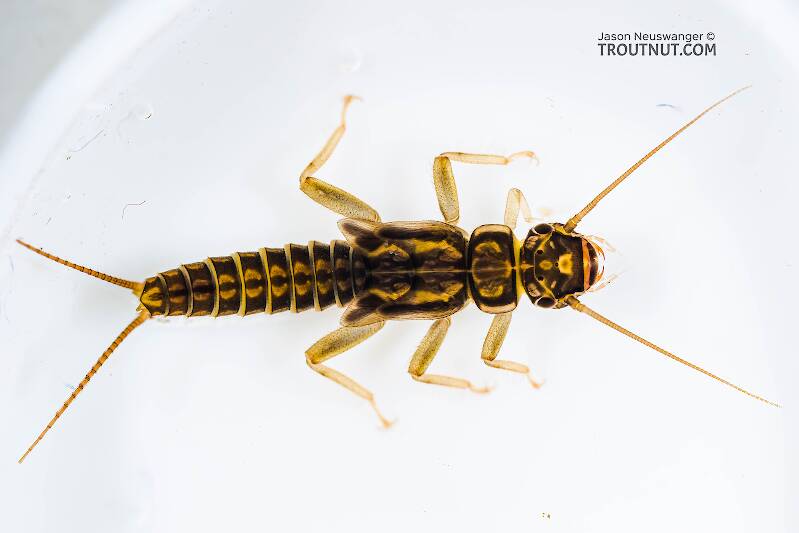
Hex Mayflies
Hexagenia limbata
The famous nocturnal Hex hatch of the Midwest (and a few other lucky locations) stirs to the surface mythically large brown trout that only touch streamers for the rest of the year.


Stonefly Species Leuctra maria (Tiny Winter Blacks)
Species Range
Physical description
Most physical descriptions on Troutnut are direct or slightly edited quotes from the original scientific sources describing or updating the species, although there may be errors in copying them to this website. Such descriptions aren't always definitive, because species often turn out to be more variable than the original describers observed. In some cases, only a single specimen was described! However, they are useful starting points.
Description from GBIFthe Global Biodiversity Information Facility
Source: Morphological Systematics Of Leuctra Duplicata Claassen, 1923 Species Group (Plecoptera: Leuctridae)
Male. The dorsal abdominal process of the 8 th abdominal tergum emanates anteriorly, extending ca. ½ length of the segment and terminates on the posterior margin as a raised, bilobed process with small, distally rounded lobes (Fig. 30); the distance between the lobes is consistently ca. equal to lobe width (Fig. 30). The 7 th abdominal tergum lacks dorsal processes, bearing only a thin, unraised sclerotized band anteriorly. The specilla are very broad basally and medially in lateral view, tapering distally to an acute apex (Fig. 27); the dorsal margin is essentially straight (Fig. 27); in caudal view the specilla bear prominent troughs from near the base to the tips, giving a distinct concave appearance (Figs. 28 – 29); the medial margin of the trough has low, tooth-like tubercles present along the distal 1/3 (Figs. 28 – 29). The subanal lobes are broadest basally, slightly recurved anteriorly in distal ½, and subequal in length to the specilla (Figs. 27 – 28). The vesicle base is short, body expanded medially and ovoid in shape, and entire surface covered in long, socketed bristles (Fig. 31).
Female. The 8 th abdominal sternum bears a broadly rounded medial tubercle on the anterior ½ that occupies the medial ca. ½ of the segment (Fig. 32). The subgenital plate terminates in large, broadly rounded or subtriangular lobes separated by a v-shaped notch (Fig. 32). Source: Morphological Systematics Of Leuctra Duplicata Claassen, 1923 Species Group (Plecoptera: Leuctridae)
Start a Discussion of Leuctra maria
Stonefly Species Leuctra maria (Tiny Winter Blacks)
Species Range
Common Names
Resources
- NatureServe
- Integrated Taxonomic Information System
- Global Biodiversity Information Facility
- Described by Hanson, J.F. (1941) Records and descriptions of North American Plecoptera. Part I. Species of Leuctra of the Eastern United States. The American Midland Naturalist 26, 174–178.

